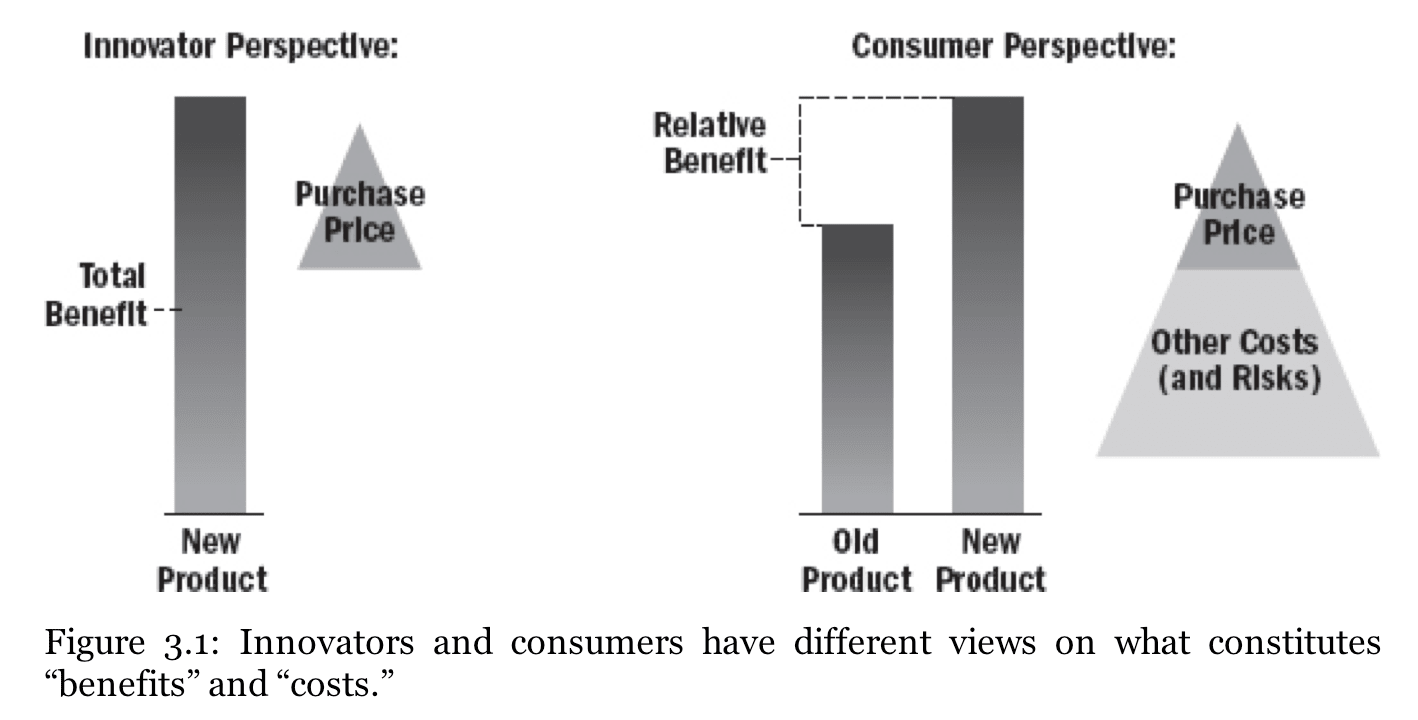3 minute read / Jun 26, 2017 /
Adoption Chain Risk - The Importance of Selling to Everyone in Your Startup's Supply Chain
In the Wide Lens, Dartmouth Entrepreneurship professor Ron Adner explores the risks associated with innovation. Execution risk is the obvious one. Then there’s co-innovation risk, what might be called chained technology risk. For example, to build a new ML focused microchip, a startup relies on the chip fabrication plant to develop 7nm equipment. But the most interesting of the three is Adoption Chain Risk.
Adoption Chain Risk is “the extent to which partners will need to adopt your innovation before end consumers have a chance to assess the full value proposition.” Adoption Chain Risk applies the idea of a supply chain to innovation.
A startup’s supply chain includes all the partners who supply essential components to a product. Those can be upstream of the company: the necessary technologies to offer a SaaS service like Amazon’s S3 or EC2. They can be downstream of the company: partners who market, sell or service software perhaps a TrendMicro. Or they can be somewhere in the middle: a customer who provides access to their data to develop some machine learning system like a LinkedIn user or a Infer customer.
Adner points to many examples in the book of teams within companies who execute flawlessly on product delivery, but ultimately fail to commercialize their innovation because of oversights convincing the rest of the adoption chain.
Michelin developed a PAX tire that resists puncture much better than standard tires. The initial launch enticed Mercedes Benz to install PAX tires on the top-of-the-line S class, and soon other carmakers followed. But these required new machines and training to repair after a puncture. Mechanics across the world didn’t see the value of investing in new equipment or training, and PAX tires ultimately failed as a business unit.
The book underscores the difference between the innovator’s perception of the benefits, compared to the customer. While the innovator sees the total benefit of their solution, the customer consider the relative benefit of the new solution compared to the old one, and also the hidden costs of switching.
Whenever a buyer decides to adopt new software, there’s an activation energy they must invest to transition. Inertia is one of the biggest blockers in sales, especially when the perceived benefit of the new solution isn’t irrefutable.
But this inertia doesn’t exist just for the customer. Rather, it’s there for every member of the downstream supply chain (channels, customers supplying data). App stores prefer to feature applications whose value proposition is strong. Resellers and go-to-market partners prefer to resell products that resonate with the customer base. Customers prefer to provide their data to vendors who will truly create new value with their data.
By mapping the supply chain, writing down the value proposition for each stakeholder wihin in, and validating that assumption, you can prevent the issues that plagued the many businesses Adler highlights in The Wide Lens.
